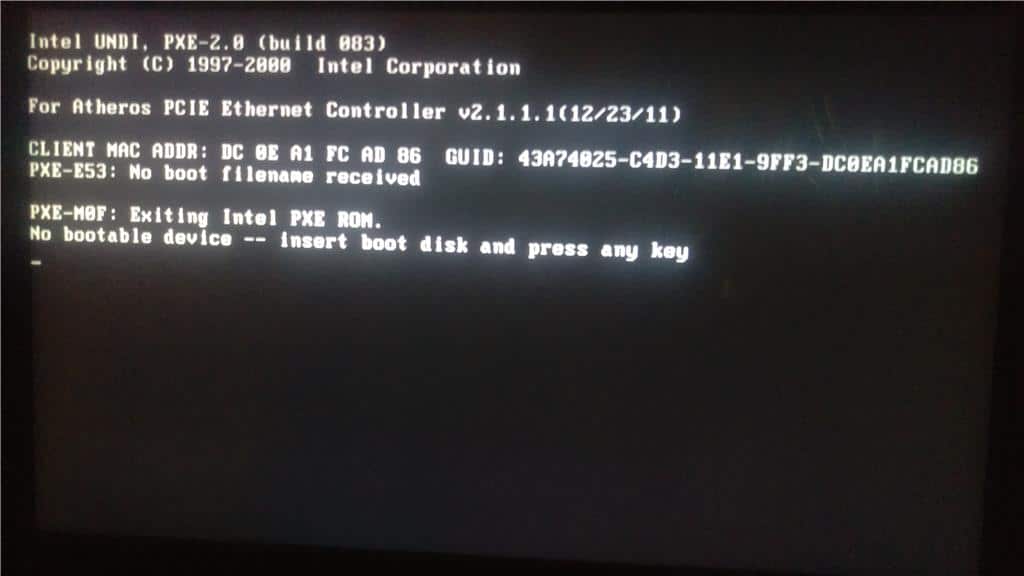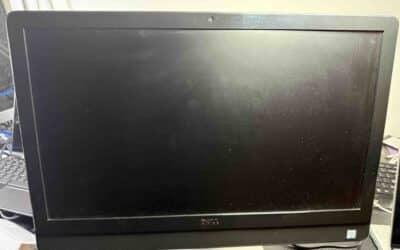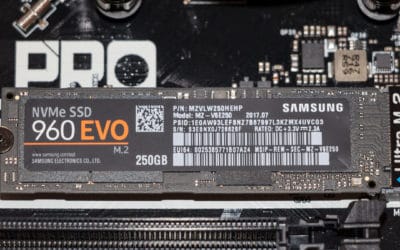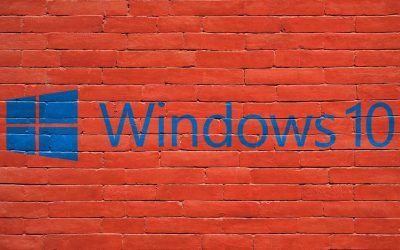How to Fix ‘The System Cannot Find Any Bootable Devices’ Error
Our clients have seen this many times and every time we could fix them by following the guide below 🙂
🪛 1. Restart Your Computer
If you’re stuck on a black screen with the error, hold the power button until the PC shuts down, then press it again to power on.
🔍 2. Check Boot Order in BIOS
Your system could be trying to boot from the wrong device.
Steps:
- Reboot your PC and press the BIOS key (usually Del, F2, or Esc) as it starts up.
- Navigate to the Boot tab.
- Make sure your internal storage drive (SSD or HDD) is at the top of the boot priority list.
- Save and exit BIOS (F10 usually).
🧰 3. Open Boot Menu
You can temporarily boot from another device using the Boot Menu.
How:
- Restart your PC and press F12, Esc, or F10 repeatedly (varies by manufacturer).
- Select your correct boot device (e.g., internal SSD/HDD).
- If it works, return to BIOS and set it as the default boot device.
🔄 4. Reset BIOS to Default Settings
An incorrectly configured BIOS can prevent your system from booting correctly.
Steps:
- Enter BIOS setup (Del/F2 at startup).
- Look for an option like “Load Setup Defaults” or “Load Optimized Defaults.”
- Save and exit.
🔌 5. Check Storage Drive Connections
Loose cables can cause your drive not to be detected – this is somehow the most common scenario we’ve experienced!
Desktop PC:
- Power down and unplug your PC.
- Open the case.
- Check the SATA data and power cables for any signs of wear/tear.
- For NVMe SSDs, remove and reinsert them carefully.
Laptop:
- Remove the bottom cover of your laptop and check if the SSD/HDD is firmly connected.
🧹 6. Remove External Devices
An USB stick or an external hard drive might be interfering with the boot process.
- Disconnect all USB devices (storage, hubs, printers).
- Restart your PC.
- Check if the error resolves.
🧑💻 7. Repair Windows Bootloader
A corrupted bootloader can cause this issue.
(Proceed with this step only if you know what you are doing!)
You’ll need:
An USB with Windows installation media.
Steps:
- Boot from the USB (use Boot Menu).
- Select Repair your computer > Troubleshoot > Command Prompt.
- Run the following commands:
bootrec /fixmbr
bootrec /fixboot
bootrec /scanos
bootrec /rebuildbcd
If using GPT/UEFI:
diskpart
list disk
select disk 0 (replace 0 with your boot disk)
list vol
select vol X (choose EFI partition)
assign letter=Z
exit
bcdboot C:\Windows /s Z: /f UEFI
🛡️ 8. Check Secure Boot and CSM (Compatibility Support Module)
Depending on your system and OS type (Legacy BIOS vs UEFI), these settings may interfered with proper booting.
- Enter BIOS.
- If you’re using a newer OS and GPT partitioning:
- Enable UEFI
- Disable CSM
- Enable Secure Boot (optional)
- If using older OS or MBR partitioning:
- Enable CSM / Legacy Boot
- Disable Secure Boot
🧪 9. Test if Drive is Detected in BIOS
If your SSD/HDD isn’t listed in BIOS:
- Try a different SATA/NVMe port.
- Try the drive in another computer.
- If still undetectable, the drive may be failing/has already failed.
🆘 10. Replace the Drive (if required)
If nothing works and your drive is not recognized anywhere, it may be faulty.
Back up any recoverable data (if possible) and consider replacing it with a new drive/SSD.
✅ Summary Table
| Issue | Solution |
| Incorrect boot order | Set boot drive as the first order in BIOS |
| Loose drive cable | Reseat SATA connections |
| External devices | Remove USB devices |
| Corrupt bootloader | Use bootrec or bcdboot tools |
| BIOS misconfigured | Reset BIOS or adjust Secure Boot/CSM |
| Dead drive | Replace with new SSD or HDD |
👨🔧 Still Stuck?
If you’ve tried all of the above and still see the error, it’s time for us to step in.
At Computer Technicians, we can:
- Diagnose hardware faults
- Recover your data
- Reinstall Windows or clone your OS
Get in Touch



